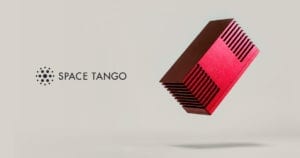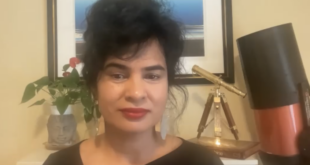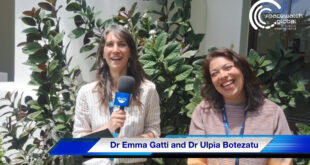
Kentucky-based Space Tango, a leader in the commercialization of low-Earth orbit (LEO) for discovery and on-orbit manufacturing across a wide range of applications, today announced the award of three projects focused on biomedical application development on the International Space Station (ISS) that will be supported by the NASA Research Opportunities for ISS Utilization. These projects will serve as a foundation for the development of capabilities and an infrastructure supporting the creation of a new biomedical market sector in the expanding space economy.
Awarded projects include:
Protein-based Retinal Implant Manufacturing using the International Space Station
Partnering Organization: LambdaVision
Development of An Orbital Laboratory to Advance Stem Cell Therapies and Regenerative Medicine
Partnering Organization: UC San Diego/Sanford Consortium
Development of Capabilities to Support Production of Stem Cells for Personalized Medicine Applications Utilizing the International Space Station
Partnering Organization: Cedars-Sinai
“We appreciate the support from NASA for our efforts to establish biomedical discovery manufacturing capabilities on orbit,” said Twyman Clements, co-founder and chief executive officer of Space Tango. “In contrast to manufacturing technology products on orbit, this sector requires unique automated capabilities to support complex biology and infrastructure that complies with the Food and Drug Administration (FDA) current Good Manufacturing Practice (cGMP) regulations ensuring pharmaceutical quality for products intended for human use. We are excited to be working with our excellent partners that bring world-class science and industry experience as we establish this emerging commercial biomedical market in low-Earth orbit.”
Development of LEO opportunities for a variety of commercial applications continues to gain steam and will be a growing part of the modern economy. Estimates from Morgan Stanley predict that the revenue generated by the global space industry, which today consists mainly of satellites that leverage only one aspect of LEO as the vantage point of space, will increase to $1.1 trillion or more by 2040, up from $350 billion in 2016. This illustrates the enormous potential of the expanding space economy and the opportunity for the creation of new markets that will drive further commercial applications that will benefit Earth.
“Our hope is that our collective efforts will further improve LambdaVision’s production processes, helping to more efficiently pave the way to a treatment option that may one day restore vision for patients who would otherwise be unable to see,” said Nicole Wagner, PhD, chief executive officer, LambdaVision and co-principal investigator of the award.
“We envision that the next thriving ecosystem of commercial stem cell companies, the next nexus for biotechnology, could be created 250 miles overhead by the establishment of these capabilities on the ISS,” said Catriona Jamieson, MD, PhD, co-principal investigator of the award and Koman Family Presidential Endowed Chair in Cancer Research, deputy director of Moores Cancer Center, director of the Sanford Stem Cell Clinical Center and director of the CIRM Alpha Stem Cell Clinic at UC San Diego Health.
“The development of new approaches to address current stem cell manufacturing challenges has the potential to change the paradigm of personalized medicine,” said Clive Svendsen, PhD, director of the Cedars-Sinai Board of Governors Regenerative Medicine Institute and co-principal investigator of the award.
 SpaceWatch.Global An independent perspective on space
SpaceWatch.Global An independent perspective on space




